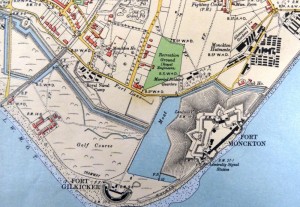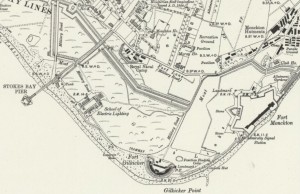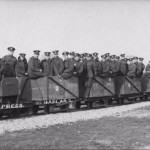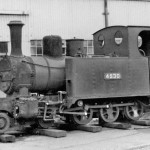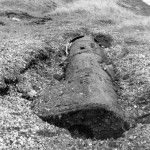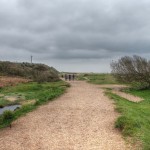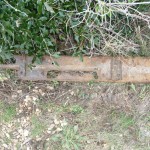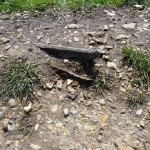
Submarine mining work began at Gosport in 1873 with a test-room in Fort Gilkicker and an old shed at Stokes Bay, formerly used by the contractor, Mr Leather, who built the Spithead forts. Tests on submarine mining were carried out at Stokes Bay over many years and in 1892 a School of Submarine Mining was established at Stokes Bay. It had within its complex a set of railway lines for moving the mines to and from the small pier that was to the east of the Stokes Bay railway pier. The railway was of 18cm gauge, standard for submarine mining work, and the trucks that ran on it were usually pushed by hand.
In 1905 Parliament decided to abolish submarine mining as a means of defence for rivers and estuaries in the U.K. Submarine Mining Defence was transferred to the Navy and the Submarine Mining Schools were reorganised. The Submarine Miners at Fort Monckton were transferred to other Royal Engineer units. The Royal Engineer School of Electric Lighting moved into the buildings at Stokes Bay to train in the use of electric searchlights for defensive purposes. Fort Monckton became the home of the 4th (Fortress) Company Royal Engineers. No.6 Electric Light Company was based at Stokes Bay, Gosport. Sometime after this a narrow gauge railway was built between the Stokes Bay establishment and Monckton Hutments.
However Lt. Col. William Baker Brown R.E. writing in The History of Submarine Mining in the British Army: 1910 (published 1923) wrote of the Gosport establishment ‘The parade was covered with 18” tram lines which were connected with Forts Monckton and Blockhouse by an 18” railway, on which ran a couple of small locomotives’. Baker Brown was an acting Chief Instructor at Stokes Bay from 1894 to 1895. This adds to the confusion as to when the railway was extended to Fort Monckton and Fort Blockhouse, particularly as the gauge of the railway from the Stokes Bay School of Electric Lighting.to Monckton Hutments was 60cm (2ft) not the submarine mining standard 18inch gauge.
A plan of Fort Monckton dated 1892 shows an 18inch gauge ‘tramway’ running from inside Fort Monckton with two external branches, one running for a short way along the outside of the ditch of the fort that connects it with the Gilkicker Lake. The other branch ran from Fort Monckton around the outside of the ditch towards Haslar sea wall. This end of the tramway ran along the Haslar sea wall past Haslar Barracks to Fort Blockhouse. It is shown on maps and plans of Haslar Sea Wall and the Haslar searchlights installation (dated 1898-1900) as being 18” gauge. One plan (dated 1912? Admiralty Department of Works plan kindly supplied by C.Donnithorne) shows a tramway running from the S.E.L. at Stokes Bay to Fort Blockhouse and this is probably the 18inch tramway referred to by Baker Brown.
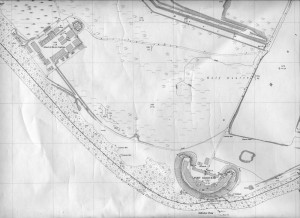 |
The later railway (post 1918) running from Monckton Hutments to the Stokes Bay School of Electric Lighting is of 60cm (2ft) gauge suggesting that it replaced the narrower gauge tramway after the establishment became the School of Electric Lighting. This line ran westwards from Monckton Hutments, north of Fort Monckton, along the line of the northern ditch of Fort Monckton past the married quarters in Fort Road. From there it turned southwards down the Military Road towards Fort Gilkicker. Where the Gilkicker Lake ended the railway turned westwards then north westwards on to the Submarine Mining Establishment east of Stokes Bay pier. Here it branched into two lines running on an earth embankment.
The Military engines that ran along the line from 1918 to 1934 were Simplex Tractors Motor Rail 1173 (LR2894) a Hunslet engine and two 4-6-OT HE 1354 (LR3238) and HE 1355 (LR3239-R.E. and 4530-Army). All were for 2ft gauge tracks. Another source (The Hidden Railways of Portsmouth and Gosport by Dave Marden) says that Motor Rail 1234 (LR2955) was also used on the line. “this example found its way to the Royal Engineer’s Haslar Depot for use on the Stokes Bay Light Railway in 1919”. A photo of this is labelled by the photographer as ‘R.E. Express Haslar 2’ and shows the engine with six open topped trucks as in the description by George pope above.
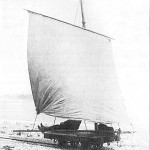 |
In ‘Blitz’ by David Maber it is reported that in 1941 a John Davis was sent to Fort Monckton to man the searchlights. He ‘recalled the narrow gauge railway that ran towards Stokes Bay pier, ‘the soldiers would often mess about on the platformed carriages that were on the lines’. Sometime after 1941 the system was closed and the line dismantled but sections of the line could still be seen up to the 1970s and the route of the railway can still be traced. At least one of the engines, HE 1355, was moved to Marchwood for training purposes where it became 4530. Another was advertised for sale in 1921 when it was lying in R.E. stores at Monckton Hutments. It was bought back by Hunslet, who refurbished it and sold it to Nepal.
The late Eddie Parker photographed a boiler that was uncovered by the Royal Corps of Transport. It was resting in the shingle beside the railway embankment. Eddie appealed for information in the Evening News. In response to this George Pope confirmed the following in a letter to the Evening News: The railway was still in use in 1932 whilst he was an A/T with 131 S.E.L. He stated that it was maintained by sappers from L(F) Company R.E. at Haslar Barracks. The track then ran from Haslar Barracks, through Monckton Hutments on a line parallel to Fort Road. It did not go into Fort Monckton but crossed the moat on the side opposite the playing fields and then veered off to the side of Fort Gilkicker and followed the shoreline to the pier. It had one engine which usually pulled six top trucks. At that time the hutments, Fort Monckton and Gilkicker, together with the pier at Stokes Bay (the one at the S.E.L. not the railway pier) and adjacent areas were part of the School of Electric Lighting and the train used usually once each week to carry stones (stores?) etc. On April 3rd 1974 Mr Parker reported that it had been removed to Longmoor Camp.
Major Alan Harfield of the Royal Corps of Signals was of the opinion that sail trains were also used on the military railway.
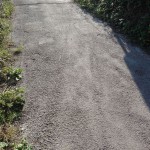
It is possible to trace the route of the military railway along the embankments that run parallel to the beach towards Fort Gilkicker. Occasionally bits of the railway emerge from the paths as they are repaired and maintained. In 2007 one of the metal sleepers was dug out of the path and discarded into the nearby bushes. A section of the rail was also dug out from beside the path in 2010 and removed. The last remaining small section of the line survives beneath the tarmac of the road to Fort Gilkicker.
This is the only surviving section of the Military Railway. The rest of the section that ran alongside the road and survived into the 1970s was dug out and discarded by the Stokes Bay Golf Club.
